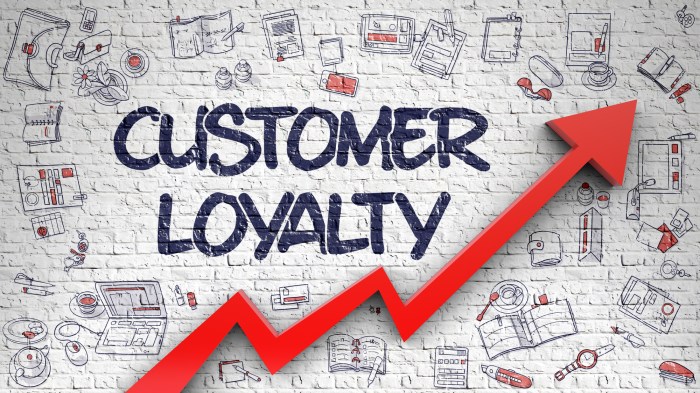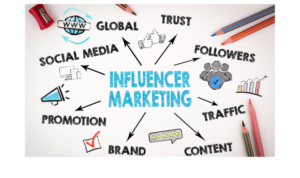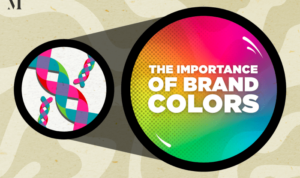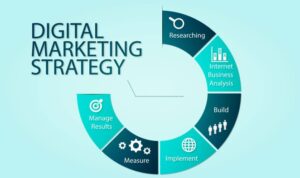Creating a Loyalty Program kicks off the journey towards building lasting connections with customers, diving into the world of rewards and retention strategies. Get ready to explore the ins and outs of fostering loyalty in the business realm.
Introduction to Loyalty Programs

A loyalty program is a marketing strategy designed to encourage customers to continue shopping at or using the services of a business by offering rewards, discounts, or other incentives. The main purpose of loyalty programs is to build a strong relationship with customers, increase customer retention, and ultimately drive more revenue for the business.
Benefits of Loyalty Programs
- Loyalty programs help businesses retain existing customers by rewarding them for their repeat purchases or loyalty.
- They can also attract new customers who are enticed by the rewards and incentives offered by the program.
- By collecting data on customer preferences and purchase behavior, businesses can personalize marketing efforts and improve overall customer experience.
- Increased customer retention leads to higher customer lifetime value and boosts the profitability of the business.
Examples of Successful Loyalty Programs
- Starbucks Rewards: Starbucks offers a loyalty program where customers earn stars for each purchase, which can be redeemed for free drinks or food items. This program has been highly successful in driving customer loyalty and increasing repeat purchases.
- Amazon Prime: Amazon’s Prime membership program offers free shipping, exclusive deals, and access to streaming services. This loyalty program has helped Amazon retain millions of customers and increase customer spending.
- Sephora Beauty Insider: Sephora’s loyalty program rewards customers with points for every purchase, which can be redeemed for beauty products or experiences. This program has been effective in building a community of loyal beauty enthusiasts.
Types of Loyalty Programs
When it comes to loyalty programs, businesses have several options to choose from to reward their customers and encourage repeat business. Let’s take a look at some of the most common types of loyalty programs and their pros and cons.
Points-based Loyalty Programs
Points-based loyalty programs are one of the most popular types, where customers earn points for each purchase they make. These points can then be redeemed for discounts, free products, or other rewards.
- Pros: Encourages repeat purchases, easy for customers to understand, can be tailored to different customer segments.
- Cons: Customers may feel pressured to spend more to earn points, can lead to a focus on quantity over quality.
Some businesses effectively using points-based programs include Starbucks, Sephora, and Amazon.
Tier-based Loyalty Programs
Tier-based loyalty programs divide customers into different levels or tiers based on their spending or engagement with the brand. As customers move up the tiers, they unlock more exclusive rewards and benefits.
- Pros: Encourages customer loyalty and higher spending, creates a sense of exclusivity, can drive customer engagement.
- Cons: Can be complex to manage, may alienate customers in lower tiers.
Examples of businesses using tier-based programs include airlines like Delta, hotels like Marriott, and gaming platforms like PlayStation.
Paid Loyalty Programs
Some loyalty programs require customers to pay a fee to join or participate. In exchange, they receive exclusive benefits, discounts, or perks.
- Pros: Generates revenue for the business, attracts more committed customers, can offer high-value rewards.
- Cons: May deter some customers from joining, can be seen as elitist or exclusive.
Businesses like Amazon Prime, Costco, and Sephora’s VIB Rouge program are examples of successful paid loyalty programs.
Coalition Loyalty Programs
Coalition loyalty programs are partnerships between multiple businesses where customers can earn and redeem rewards across different brands. This allows for a wider range of earning and redemption options.
- Pros: Expands the reach of the program, offers diverse rewards, can attract new customers from partner businesses.
- Cons: Requires coordination between partners, may dilute the brand’s exclusivity.
Examples of coalition loyalty programs include Plenti, which was a partnership between multiple retailers, and the American Express Membership Rewards program.
Designing a Loyalty Program
When designing a loyalty program, there are several key elements to consider to ensure its success. From setting achievable goals to creating attractive rewards for customers, every detail plays a crucial role in the overall effectiveness of the program.
Key Elements to Consider
- Define your target audience: Understand who your loyal customers are and what motivates them to stay engaged with your brand.
- Set clear objectives: Determine what you want to achieve with the loyalty program, whether it’s increasing customer retention, boosting sales, or driving brand advocacy.
- Create a tiered structure: Implement different levels of rewards based on customer loyalty and engagement levels to encourage progression.
- Personalize the experience: Tailor rewards and incentives to individual customer preferences and behaviors to enhance their overall experience.
Setting Achievable Goals
- Establish measurable metrics: Define specific KPIs to track the success of the loyalty program, such as customer retention rate, repeat purchase frequency, and average order value.
- Align with business objectives: Ensure that the goals of the loyalty program are in line with the overall goals of the business to maximize its impact on revenue and customer satisfaction.
- Monitor and optimize: Regularly review performance data and make adjustments to the program to improve results and meet set targets.
Creating Attractive Rewards for Customers
- Offer diverse rewards: Provide a variety of rewards options, including discounts, exclusive access, free gifts, and personalized experiences to cater to different customer preferences.
- Make rewards attainable: Set achievable milestones for customers to earn rewards, making it easy for them to participate and stay engaged with the program.
- Promote exclusivity: Introduce limited-time offers, VIP perks, and special events to make customers feel valued and incentivize continued loyalty.
Implementing a Loyalty Program

When it comes to launching a loyalty program, there are several key steps that businesses need to follow in order to ensure its success. First and foremost, it’s important to define the objectives of the program and determine what rewards will be offered to customers. This could include discounts, freebies, exclusive access to events, or other perks.
Steps Involved in Launching a Loyalty Program
Implementing a loyalty program involves the following steps:
- Define program objectives and rewards
- Choose a loyalty program structure (points-based, tier-based, etc.)
- Select a loyalty program platform or software
- Communicate the program to customers
- Train staff on program implementation
- Launch the program and monitor its performance
Promoting the Program Effectively to Customers
Effective promotion of a loyalty program is essential to drive customer engagement and participation. Here are some best practices:
- Utilize multiple channels to communicate the program (social media, emails, in-store signage)
- Highlight the benefits of joining the program (exclusive offers, rewards, personalized experiences)
- Create a sense of urgency with limited-time promotions or bonuses for signing up
- Encourage referrals and word-of-mouth marketing by rewarding customers for bringing in new members
Tracking and Analyzing the Program’s Performance
Tracking and analyzing the performance of a loyalty program is crucial to its success. Here are some tips for effectively measuring its impact:
- Monitor customer engagement and retention rates before and after launching the program
- Track redemption rates of rewards and incentives offered
- Collect feedback from customers to gauge satisfaction with the program
- Use data analytics tools to identify trends and patterns in customer behavior
- Regularly review and adjust the program based on performance metrics to optimize results
Benefits of Loyalty Programs: Creating A Loyalty Program
Loyalty programs offer a variety of advantages for both businesses and customers. These programs can lead to increased customer retention, higher brand loyalty, and improved overall customer satisfaction.
Increased Customer Retention
- Loyalty programs reward customers for their repeat business, incentivizing them to continue purchasing from the same company.
- By offering exclusive benefits and rewards, businesses can keep customers engaged and coming back for more.
- Customers who feel appreciated and valued are more likely to remain loyal to a brand over time.
Enhanced Brand Loyalty
- Loyalty programs create a sense of connection and trust between customers and businesses, leading to stronger brand loyalty.
- Customers who are part of a loyalty program are more likely to choose a particular brand over competitors, even if they have to pay a bit more.
- Positive experiences with a loyalty program can turn customers into brand advocates, spreading the word and attracting new business.
Positive Impact on Businesses, Creating a Loyalty Program
- Loyalty programs can increase revenue by encouraging repeat purchases and larger order sizes from loyal customers.
- Businesses can gather valuable data and insights from loyalty program members, helping them tailor marketing strategies and improve customer experiences.
- Examples like Starbucks Rewards and Amazon Prime showcase how successful loyalty programs can drive customer engagement and boost profitability.
Technology and Loyalty Programs
Technology plays a crucial role in modern loyalty programs, enabling businesses to connect with customers, track their behavior, and offer personalized rewards. Data analytics is key in optimizing these programs, providing insights into customer preferences, trends, and areas for improvement.
Role of Technology
Technology allows businesses to collect and analyze customer data, track purchasing patterns, and target specific demographics. It also enables the automation of reward distribution and communication, making the loyalty program more efficient and effective.
Importance of Data Analytics
Data analytics helps businesses understand customer behavior, predict future trends, and tailor rewards and offers to individual preferences. By analyzing data, businesses can optimize their loyalty programs, increase customer engagement, and drive repeat purchases.
Examples of Innovative Technologies
- Mobile Apps: Many loyalty programs now have dedicated mobile apps that allow customers to track their rewards, receive personalized offers, and easily redeem points.
- RFID Technology: Some businesses use RFID technology to track customer purchases in-store, allowing for real-time data collection and personalized recommendations.
- Artificial Intelligence: AI is being used to analyze customer data, predict future behavior, and automate personalized marketing campaigns, making loyalty programs more effective.
- Beacon Technology: Beacons are used to send targeted messages to customers when they are in-store, promoting specific products or offers based on their preferences and past behavior.





